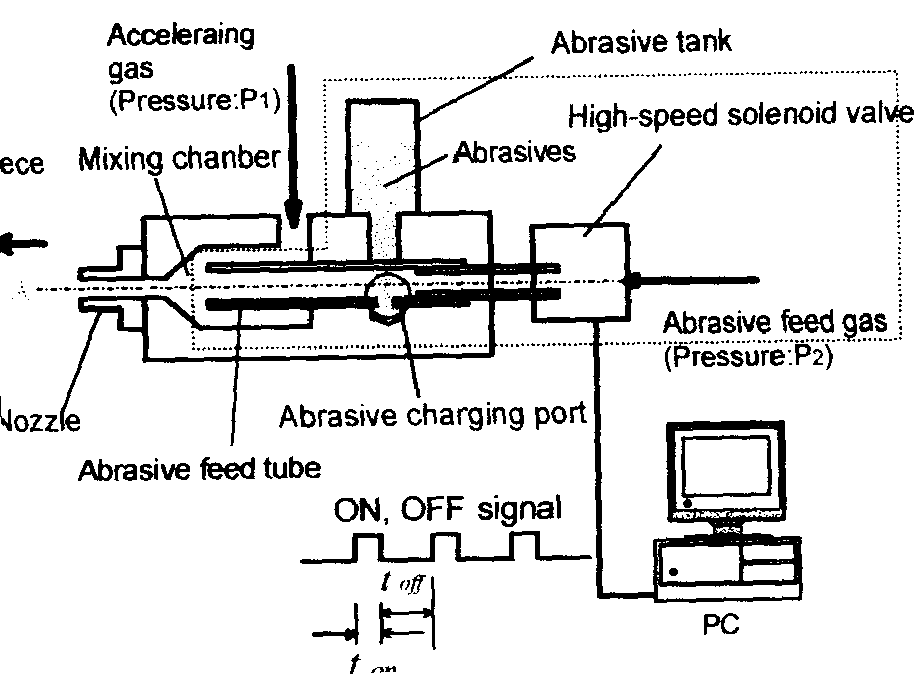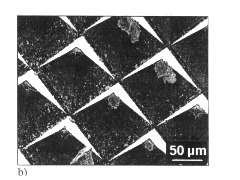Precision Machining of Advanced Materials
Post Date: 12 May 2009 Viewed: 839
Examples of topics and summary of a few research findings:
Abrasive Jet Printer. A new nozzle design will greatly extend the capabilities of abrasive jet machining in making blind holes. A high speed solenoid pulses abrasive entrainment in 10 millisecond bursts allowing time for the main air jet to remove loose materials from hole bottoms for faster and better control of machining. The nozzle makes possible an abrasive jet printer that etches ceramics and other materials directly without costly masking. Illustrating precision capabilities, the abrasive jet printer etched glass in 64 different levels to yield an graphic image in 80 dpi resolution.

Structured Superabrasives. Though structured coated abra-sives made with aluminum oxide and silicon carbide have been around for years (eg. Norax or Trizac), similar product containing superabrasives are still being developed. In tests at Angstrom Laboratory, Sweden, structured superabrasives made using a wafer patterning technology bested silicon carbide abrasives particularly when finishing alumina ceramics. Silicon carbide was best, however, when grinding brass.
Diamond Tools. The greentape laser sintering system appears to be a way to make better tools. As demonstrated in tests polishing austenite stainless steel with copper-bonded aluminum oxide or CBN, advantages of such tools are high porosity, flexibility to include a wide range of abrasives, and the ability to make hybrid structures.
Wear on Diamond Tools. A thermodynamic analysis of the wear of diamond tools when machining steels considered four possible thermo-chemical mechanisms. Findings include two significant mechanisms that depend upon temperature and partial pressure of oxygen in work environment.
Workpiece burn. Studies of grinding burn in new DZ4 nickel-based alloys, which are being used for aircraft turbines, show the ratio of normal to tangential grinding forces is an easy way to determine the onset of grinding burn.
ELID. ELID grinding produces good surface characteristics on CVD -SiC films. Tools finished with ELID have wear rates that are less dependent upon the lay of surface finishes. Also wear is minimal when contract pressures are below a critical maximum value, which is coincident with a transition from powder to nonpowder wear mechanisms.




